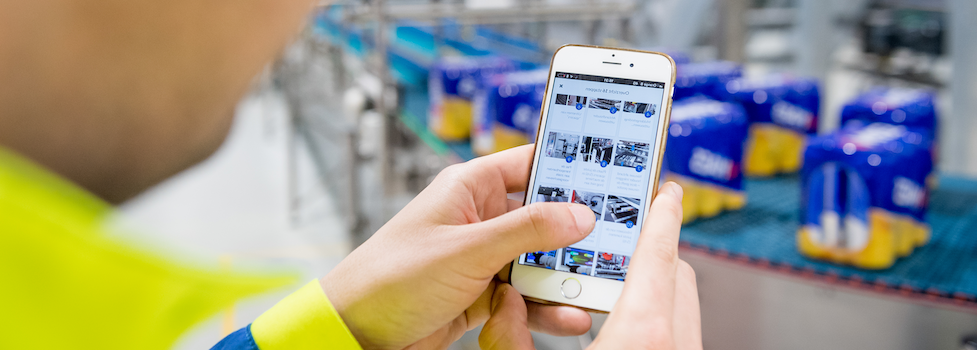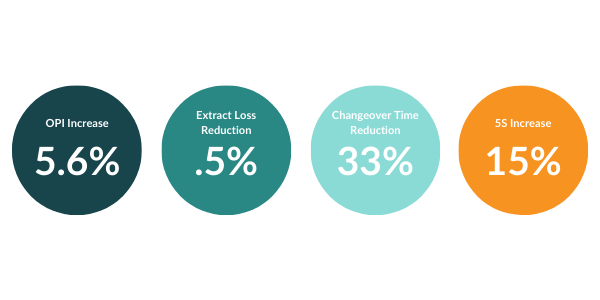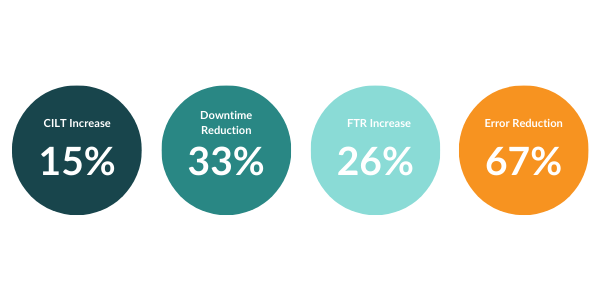Promotional Features
SwipeGuide: How better work instructions will give you the edge in industry 4.0
You’ve probably felt the pressure.
The world of Industry 4.0 - while incredibly exciting - brings with it a number of unprecedented challenges for manufacturers. Rapid digitization. A growing skill gap in your workforce. More automated and complex procedures on the shop floor than ever before. And in the beverage industry, quality and production standards are incredibly high, the pressure is magnified tenfold.
Let’s face it. You need to protect your bottom line while implementing an effective, scalable way to increase efficiency and reduce waste on the shop floor. And all of that while simultaneously creating a solution for a new workforce comprised of digital natives.
So where do you start?
The digital solution
We’re all familiar with work instructions.
They’re such a basic part of beverage production that they might not be the first thing that comes to mind when you consider a manufacturing revolution. But what if we told you that by optimizing your digital work instructions, you could reduce changeover time in a production line by up to 30%? We’ve seen it happen within weeks of adoption.
After working with beverage and OEM manufacturers like Heineken, ABB and Chivas Brothers Pernod Ricard, it’s clear that improving something as simple as a work instruction can make a significant difference on the shop floor.
The problem
The underlying problem is that traditional, old-fashioned paper and PDF work instructions are simply ineffective in Industry 4.0. Instead of facilitating learning on the shop floor, they actually impede it in a number of ways.
These are some of the common complaints we’ve identified in the beverage production industry:
- Most instructions are still delivered by suppliers in the form of paper manuals that are not used (and quickly disposed of).
- Employees often disregard instruction materials, as they are difficult to find when needed, text-heavy and not designed for effective use on the shop floor.
- Each location depends heavily on a small set of people to create and distribute instructions, so users struggle with outdated information.
- Despite high global spending on a fix for these issues, manufacturers often lack practical analytics to measure real results and improve processes in the production and supply chain.
Hard to author, edit and distribute, bad work instructions on the shop floor are a frequent culprit for production bottlenecks, waste and sub-par products.
Better processes
Digital work instructions alleviate these pain points by providing teams with easy-to-use, standardized work instructions to increase operational efficiency in all processes on the factory floor.
Check out a number of the beverage manufacturing processes immediately impacted by adopting digital work instructions.
- Overall Performance Indicators (OPI) - Operational efficiency is measured with a metric known as OPI that measures productivity, resource usage, and extract losses in the manufacturing process. We’ve seen OPI increase from 52.2% to 57.8%.
- Extract Loss - Extract losses, production line mistakes caused by human error, have also decreased from 3% to 2.5%. For perspective, a 1% increase in extract losses can cost a beverage production facility an estimated €200,000 every year.
- Changeover Time - One of the most significant advantages of digital work instructions is reflected in changeover time. After implementation, production sites have reduced changeover times by 33%. A reduction of this magnitude means higher production, as well as higher sales revenue. We’ve seen one hour of changeover time cost €40,000 in lost sales revenue.
- 5S Score - Manufacturers use a metric known as 5S to qualify hygiene standards within manufacturing processes. Since implementing digital work instructions, our customers have seen 5S measurements climb from 75% to 90%.
- Cleaning Inspection Lubrication & Tightening (CILT) - This measures the success of regular machine maintenance. CILT standards focus on the cleaning, lubrication and inspection of machinery on the shop floor. Great instructions help employees perform these tasks with less hesitation and frustration, and with greater accuracy. With digital work instructions, CILT standards can be increased from 75% to 90%. This means their machines run more efficiently, and with fewer expensive failures and instances of unplanned downtime.
Better products
As you know, better processes don’t just translate to lower costs and greater efficiency. When work is smarter on the shop floor, your end products will also receive a boost in quality. This means satisfied customers and better performance throughout your entire supply chain.
- First Time Right (FTR) - FTR is tied directly to error reduction. Manufacturers use this metric to ensure that processes on the factory floor are performed correctly from the start. When FTR increases, it means that employees are spending less time correcting mistakes and are producing higher-quality products at a faster rate. With digital work instructions, FTR rates have jumped from 67% to 93%. This represents significantly less waste of raw materials, a reduction in defects, and better-tasting and safer products for customers.
- Error Reduction - Digital work instructions also reduce errors on the shop floor. For example, we’ve seen a 67% reduction in barcode errors during production. Third-party distributors use these codes to efficiently stock and track the product for market. Fewer errors means better products and a boost for the brand’s global reputation.
Global impact
These examples represent success stories from around the world. But they’re just a small part of a story about how effective a digital transformation can be when you start from the ground up.
With the right digital work instruction platform, beverage manufacturers can create and distribute standardized, up-to-date instructions and procedures in real-time. Standards can now be distributed across your global value chain with the push of a button, and your experts on the shop floor can collaborate to create a cycle of continuous improvement.
Yes, the world of manufacturing is changing. If you take the time now to invest in intuitive, scalable digital solutions your beverage production can gain an edge against the competition in Industry 4.0.



